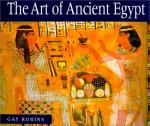|
This section contains 486 words (approx. 2 pages at 300 words per page) |

|
Late Development. The class of professional soldiers developed late in Egyptian history. They did not exist until the Middle Kingdom (circa 1980-1630 B.C.E.). In both earlier and later periods the Egyptians depended on foreign mercenaries, especially from Nubia. This dependence led to the absorption of Nubians into the general Egyptian population. The professionalization of the military during the New Kingdom (circa 1539-1075 B.C.E.) led to a middle class of retired, landholding, military men.
Mercenaries. Though Egyptians served in military expeditions as part of the required government service called the corvee, many soldiers serving Egypt were foreigners. Artistic representations of soldiers often showed them in distinctive ethnic dress. The first inscription describing the army was written in Dynasty 6 (circa 2350-2170 B.C.E.) and explicitly names groups of Nubians as mercenaries. First Intermediate Period (circa 2130-1980 B.C...
|
This section contains 486 words (approx. 2 pages at 300 words per page) |

|




